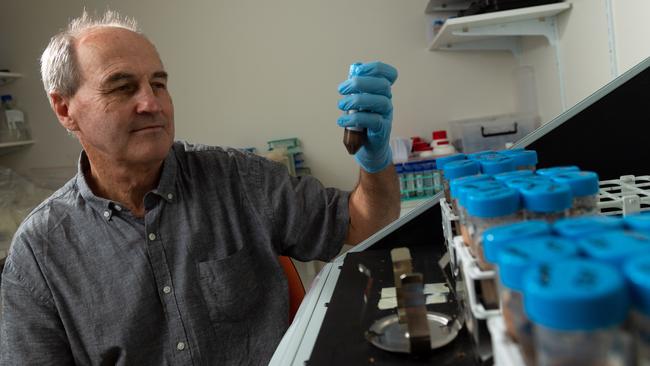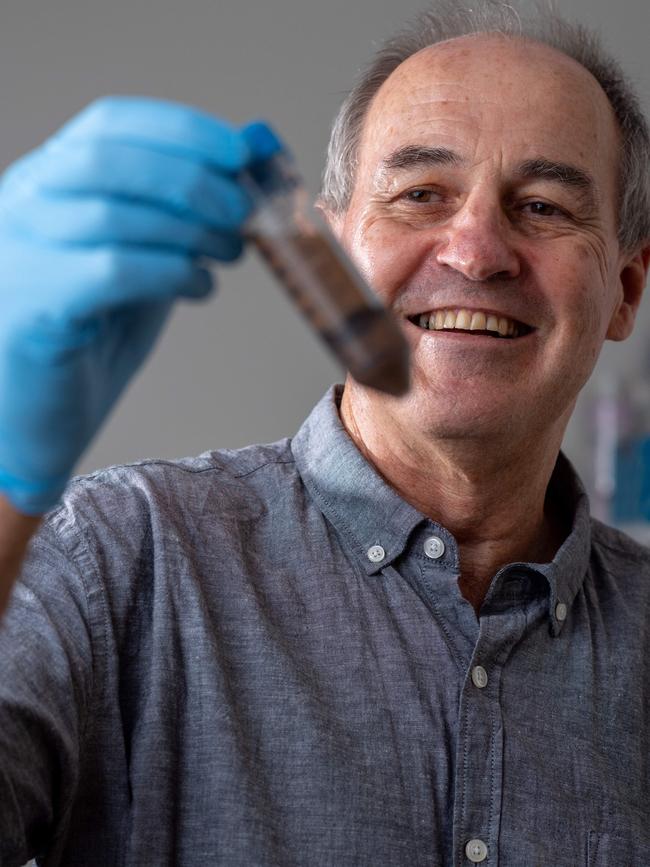Melioidosis mortality rate falls dramatically over the past 30 years, Menzies study finds
The mortality rate for deadly tropical disease melioidosis has dropped over the past 30 years, according to new research from the NT’s Menzies School of Health Research.

Northern Territory
Don't miss out on the headlines from Northern Territory. Followed categories will be added to My News.
THE mortality rate for melioidosis has dropped in the last 30 years, new research has found.
The deadly tropical disease which once killed 31 per cent of all people infected has dropped to a mortality rate of just six per cent over the past three decades, according to a new paper published in The Lancet Infectious Diseases Journal.
Melioidosis is caused by bacteria that lives in the soil in tropical regions.
The bacteria lives below the soil’s surface during the dry season but can be found in mud and surface water after heavy rainfall.
The Darwin Prospective Melioidosis Study, by Menzies School of Health Research researchers, also provides evidence that the bacteria can become airborne during monsoonal weather events and be inhaled.
MORE TOP NEWS
Ex-chief minister Shane Stone says reward fully vaccinated with travel and freedom
Zach Rolfe may be immune from prosecution over Yuendumu shooting, court hears
Royal Darwin Show kicks of with animals, rides and plenty of showbags
Menzies and Royal Darwin Hospital lead author Professor Bart Currie said the 30-year study showed the importance of recognising diabetes and hazardous alcohol use as major risk factors for the severity of melioidosis, and also that people on immune suppressing therapy including cancer patients were at heightened risk.
“With early diagnosis and best antibiotics and ICU treatment, healthy people should not die from melioidosis,” Prof Currie said.
“This is what the RDH microbiology laboratory, Infectious Diseases Department and ICU have learnt and the 2020 Darwin melioidosis treatment guideline is now used internationally, for instance in the USA with recent cases of melioidosis.

“Analysis of our 30 years of cases and links to weather also provides consistent evidence that global warming is likely to increase the risk of melioidosis in the future and expand the boundaries southward.
“With colleagues in Australia and overseas, we also have found that there are unexpected instances of melioidosis outside the tropics and more work is needed to understand these occurrences.”
Research into the disease has found it originated in Australia before spreading to Asia, Africa and most recently the Americas.
“There is much more work to be done as even in the Darwin study we have found ‘Asian’ strains that have entered Australia in recent decades, but how and from where specifically we don’t yet know,” he said.
“Similar recent findings of a cluster of three cases of ‘imported’ melioidosis in the USA shows how important it is for there to be a “global” view on melioidosis and for international collaborations to share findings and data to better understand this enigmatic infectious disease.”


